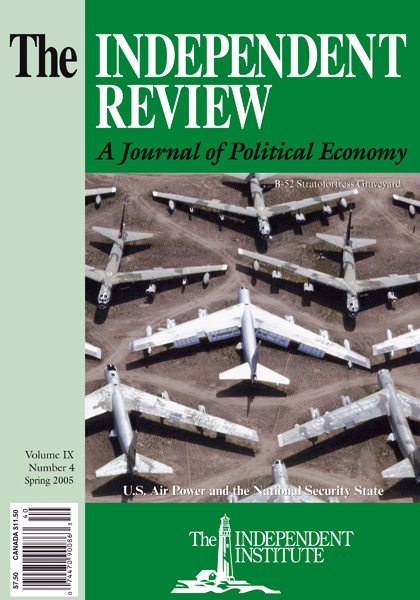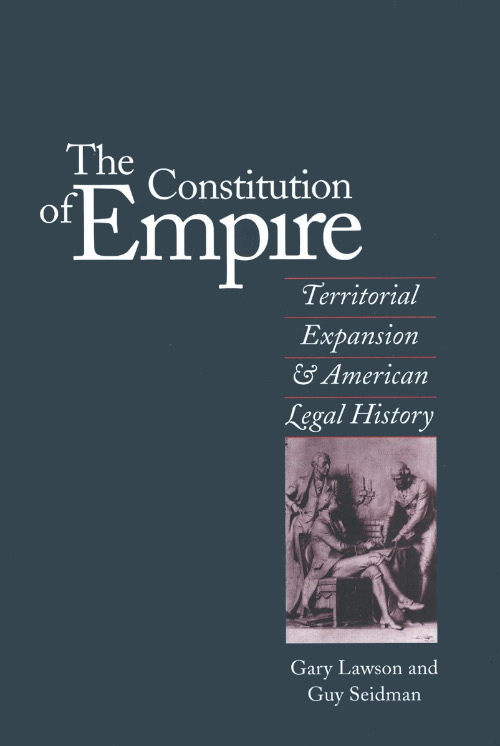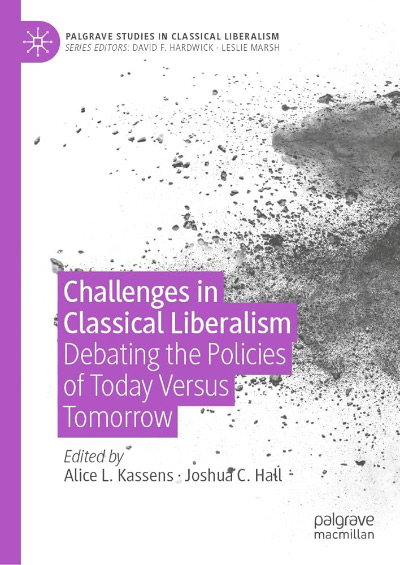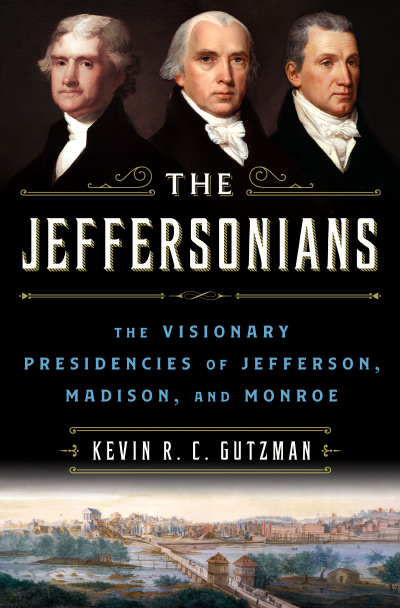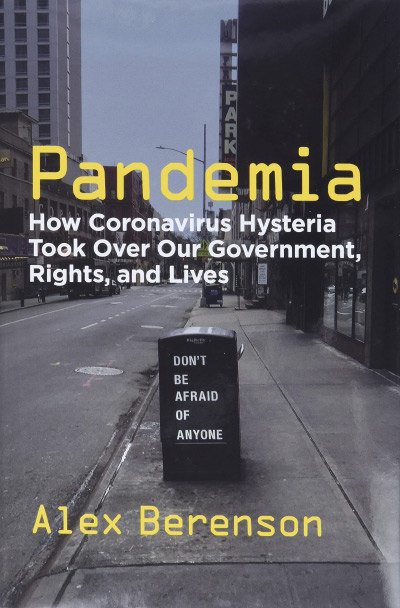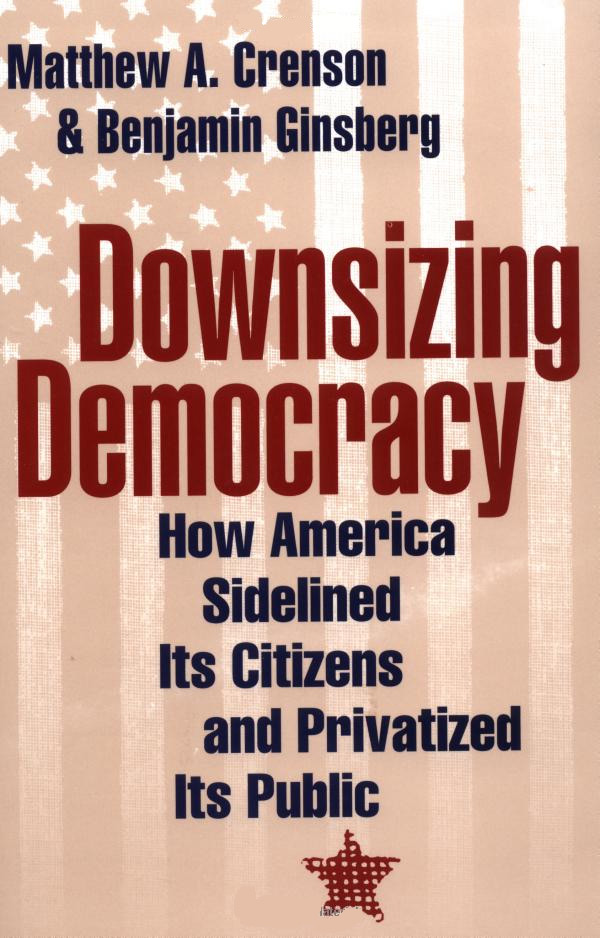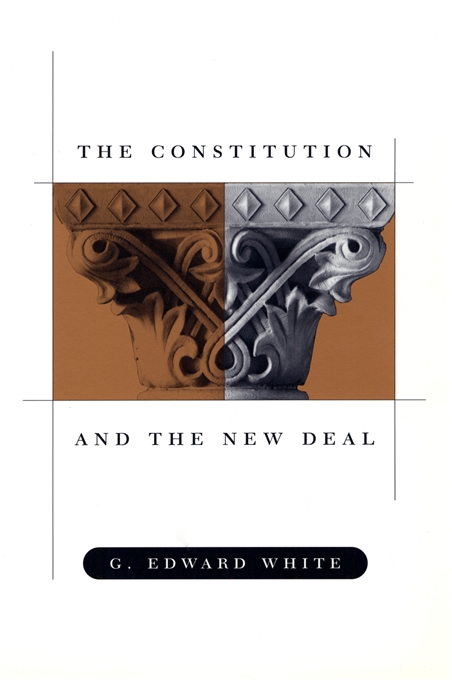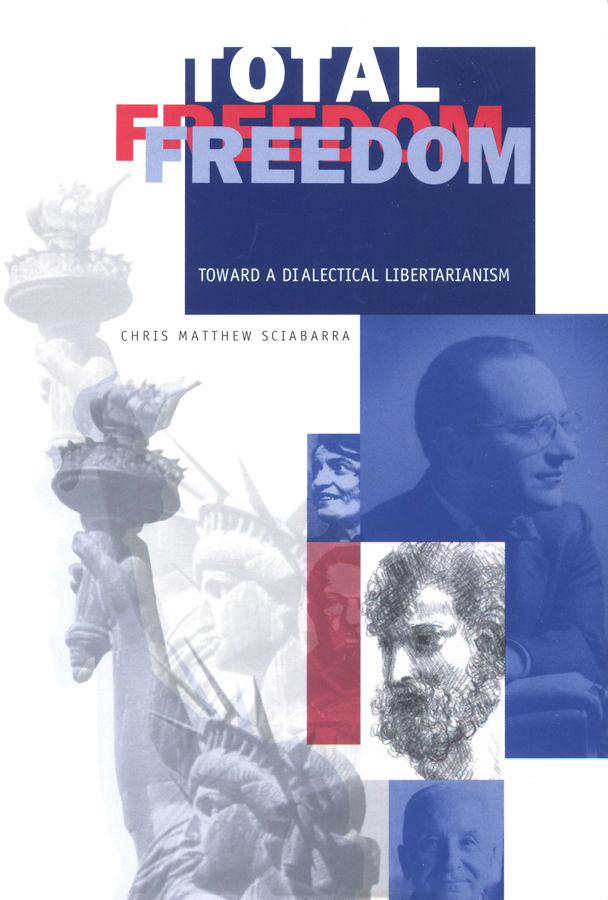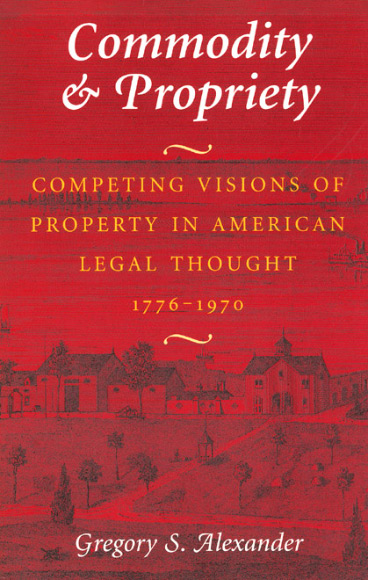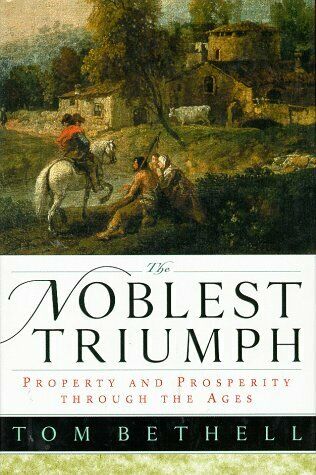The Constitution of Empire is a study of nineteenth-century U.S. territorial expansion aimed at developing self-governing political communities for admission into the Union. This territorial expansion phase, with the all-important exception that its basic purpose was different, can be considered a U.S. version of a type of political rule that has existed since antiquity—namely, overland empire consisting in subnational colonial units. Although an attempt was eventually made to create an overseas insular-dependency empire on the model of European states, U.S. political principles proved unsuited to this second type of imperial rule. The revival of imperial thinking in the twenty-first century and its application to U.S. foreign policy in particular have resulted from the expansion of U.S. influence in the post–Cold War world.
Although the study under review is limited to one type of imperial expansion, its theoretical scope comprehends issues relevant to contemporary debate over imperialism in world politics and in political life in general. In the deepest sense, The Constitution of Empire is a reflection on whether it is possible to constitute state power for national existence while limiting the exercise of state power for external security needs and other national interests.
The authors approach this fundamental question in a disciplined, methodical, and circumscribed way. They observe that the national government created at the Constitutional Convention continues to exist. The question is whether it has endured as the same republican form of government the Founders intended to create. Most obviously, the country’s territorial limits have expanded greatly. Gary Lawson and Guy Seidman focus their study on the question of whether territorial expansion has “taken place pursuant to or outside the bounds of the United States Constitution?” The “dimension of constitutional meaning” is their point of entry into the problem of American national identity (p. 2).
The Constitution of Empire employs an “original meaning” theory of interpretation to test the practices of U.S. territorial expansion. Original meaning is an objective thing that “follows from the nature of the Constitution as a public communications instrument” addressed to a general audience (p. 8). Using this technique, Lawson and Seidman evaluate imperial expansion in two respects: acquisition of territory and territorial governance. Through detailed legal analysis, they show that acquisition of territory is constitutional, as in the Louisiana Purchase and the acquisition of Florida, Texas, Oregon, California, Alaska, and Hawaii. Constitutionally correct means of acquisition include the treaty power, the power to admit new states into the Union, and the powers of conquest, diplomacy, discovery, and statutory annexation. The political end that justifies territorial acquisition is the capability of a territory to become a state in the Union. Only the acquisition of the Philippine Islands, where the possibility of statehood was nil, fails this test of constitutionality.
The second aspect of constitutional evaluation concerns territorial governance. In this area, however, the activity of expanding the limits of the nation seems intrinsically at odds with constitutional structures and rules. Judged by the rigorous standard of original meaning, lawmakers and executive officers appear in this account to have shaped territorial policy in willful disregard of the Constitution.
For example, Lawson and Seidman argue that territorial governors must be appointed by the president with the advice and consent of the Senate; popular election is not constitutionally permissible. On numerous occasions, however, Congress has provided for popular election of governors by the people of the territory. Similarly, territorial courts, which form part of U.S. judicial power, must according to the plain meaning of the Constitution be organized under Article III rules governing judicial appointments. Again, Congress has created territorial courts without regard to Article III requirements.
The best example of this constitutional waywardness appears in the account of military government in California during the Mexican War. Lawson and Seidman state that military governance stems from the executive power, which includes the power to wage war in accordance with the international laws of war. It follows that the power to govern occupied territories is limited by the war power and the duration of a particular war. However, this “simple and basic” principle, the authors observe, “as with many simple and basic constitutional principles, has had little impact on the actual course of American practice” (p. 152). After the treaty of Guadalupe Hidalgo, the California military government created by the president continued to function. Congress failed to establish a territorial government, and the Supreme Court upheld the constitutionality of the military government in Cross v. Harrison (1854). Lawson and Seidman are appalled at the Court’s reasoning. The conclusion that wartime powers carry over into peace time as long as the president and Congress do not affirmatively end them “is an absurd warping of the constitutional scheme of limited government” (p. 179).
How can such dereliction of constitutional duty, as it appears to the authors, be explained? It is obvious that Lawson and Seidman’s way of interpreting the Constitution differs from that historically employed in the development of constitutional law. The theory of original meaning they have adopted considers constitutional text, linguistic usages, historical context, and background understandings. Orthodox constitutional theory considers the same things, but constitutional interpreters acting within the system, far more than Lawson and Seidman, take into account the political horizon in which constitutional government exists. As distinguished from academic theorists, constitutional actors required to engage in the activity of interpretation are under an obligation to consider the particular elements of a constitutional controversy from the standpoint of practical reason.
Consider the Louisiana Purchase, the foundational act of territorial expansion. Lawson and Seidman state that acquisition of territory is constitutionally warranted as an exercise of the treaty power, considered as a means of implementing a textually enumerated power, such as the admission of new states. In other words, territorial acquisition is not an incident of sovereignty that all governments possess, as many lawmakers argued at the time. Indeed, say Lawson and Seidman, the argument from sovereignty “fundamentally misunderstands the Constitution and the very concept of a limited government.” “The distinctive genius of the American Constitution,” they add, “is the idea, clearly codified in the Tenth Amendment, that every exercise of national power must be traceable to an explicit or implicit grant of power in the document” (p. 22).
The theory of original meaning on which this book rests departs from orthodox interpretive practice in a second basic respect as well. Lawson and Seidman employ a cognitive-normative distinction that is disconfirmed by the historical experience of constitution making and interpretation. They believe that ascertainment of constitutional meaning is “conceptually separate from an assessment of its normative force” (p. 9). Insisting that the meaning of the Constitution and its soundness as a basis for decision making are different things, they argue that concerns about the latter “contaminate the interpretive inquiry” (p. 9). In this view, constitutional interpretation as an intellectual activity and practical reason as the end of political deliberation are unrelated matters.
Lawson and Seidman acknowledge that a critical question in constitution making is the relative risk of granting too much or too little power to government. “If the Constitution makes the wrong call on some of these questions, it is a bad constitution, but that is a matter for political theorists rather than constitutional interpreters.” “To a dedicated constitutionalist,” they argue, “the whole point of a limited government is that there may be some potentially useful things that the government is disabled from doing” (pp. 58–59).
This book is an impressive piece of scholarship that demonstrates the intellectual resourcefulness of the tradition of textual constitutionalism. The authors’ constitutionalist conviction and their ingenious and tightly reasoned elaboration of constitutional meaning are greatly to be admired. There is, however, another tradition to which a constitutionalist may be dedicated: that of the statesman and the citizen who are obliged to determine constitutional meaning under the discipline of practical reason. Considered from this point of view, the cognitive and normative dimensions of constitutional construction are inseparable: a constitution is intrinsically normative, or it is not really a constitution.
From this perspective, the genius of the Constitution may be said to lie in its recognition of the nature, conditions, and requirements of political life. The constitution of a well-ordered polity defines and limits the exercise of state power. On account of this definition and limitation, forceful and effective government can exist. The authority and power that subsist in political life manifest themselves in the world, whether or not formally recognized in a textually explicit or implicit grant of power. A constitutional document that takes into account the subsistent reality of authority participates more effectively in the ordering of political life to the end of human flourishing.
In The Constitution of Empire, a fundamental distinction exists between the internal government of a political community and its external relations with other communities. U.S. territorial expansion falls in the category of external relations and is so recognized in the constitutional distinction between domestic governance and foreign affairs. The reason for the distinction is that in conducting external relations, U.S. officials deal with political actors who are not subject to U.S. constitutional requirements.
With respect to territorial expansion, considered as a subset of external affairs, Lawson and Seidman state that “the constitutionally relevant moment is the moment of acquisition” (p. 203). From the beginning of the government, the treaty power has occupied a central place in the constitutional structure. The disputed question of constitutional interpretation has been whether the treaty power is a grant of jurisdictional power to pursue independent ends or an implementing mechanism to be used only to give effect to express or implicit grants of jurisdiction in the Constitution. More directly, to what extent and in what ways does the treaty power implicate national sovereignty?
Lawson and Seidman reject the national-sovereignty interpretation of the treaty power. They hold, with Thomas Jefferson, to the implementational theory of executive treaty making. Here they invoke what they refer to as the default rule for the exercise of federal power: “when in doubt, don’t”—a rule said to derive from the “anti-power presumption” built into the Constitution that serves as a “basic epistemological principle.” The presumption and the principle, the authors aver, are “not grounded in normative and political concerns” (p. 71).
Lawson and Seidman recognize, however, that the Jeffersonian theory of the treaty power has weaknesses. The most conspicuous one, they concede, “is its relative dearth of historical support” (p. 71). The reason for this lack of support, I suggest, is the counterintuitiveness of the proposition that the constitution of a political community need not and should not be based on normative and political concerns. As a prima facie matter, this necessity was understood by supporters of the Louisiana Purchase, who argued that acquisition of territory by treaty was a necessary incident of sovereignty that required no specific authorization in the constitutional text.
The constitutional theory advanced in this book is one-sided. To be sure, a written constitution of delegated powers has practical value in limiting the exercise of government power. Spelling out the meaning of constitutional provisions that prohibit state power from being used in particular ways and for specific ends—as in preventing practices of “full-fledged colonialism”—may, when it represents the settled conviction of public opinion, present an insuperable barrier to imperial-minded policymakers.
Liberty, it might then be said, will be rightly secured against the demands and exigencies of power. The rule of liberty, however, must itself depend on power to be effective. And where will this power come from if not from the authority that subsists in political life, that unifies the parts into a whole for the sake of the common good, and that is affirmed, ordered, and institutionalized in a constitution of government?
Lawson and Seidman aim high in projecting a theory of constitutionalism that appeals to the logical rationality of textual interpretation. It does so, however, at the expense of prudentialism and practical reason. In their treatment of military government in California, for example, the authors note that political deadlock between Congress and the president over slavery prevented the creation of a constitutionally legitimate territorial government. This political failure was “not the Constitution’s problem.” “If congressional paralysis is really a mandate for disregarding constitutional commands,” Lawson and Seidman advise, “then constitutionalism is a bad joke—as it surely was for California” in the aftermath of the Mexican War (p. 187). This seems an odd conclusion to draw in a study of constitutionalism. The point seems to be that if the reality of political life, in its contingent manifestations and natural necessities, does not conform to constitutional rationality, then so much the worse for political life.
More perhaps than the authors acknowledge, liberty stands in need of authority in order to be distinguished and recognized in the world as a good for human flourishing. A libertarian constitutionalism that takes this philosophical reality more clearly into account would in my view be of practical value in understanding how better to construct a binding and effective constitution of limited government.
| Other Independent Review articles by Herman Belz | |
| Spring 2003 | Reassessing the Presidency: The Rise of the Executive State and the Decline of Freedom |
| Winter 1996/97 | The Sacred Fire of Liberty: James Madison and the Founding of the Federal Republic |

